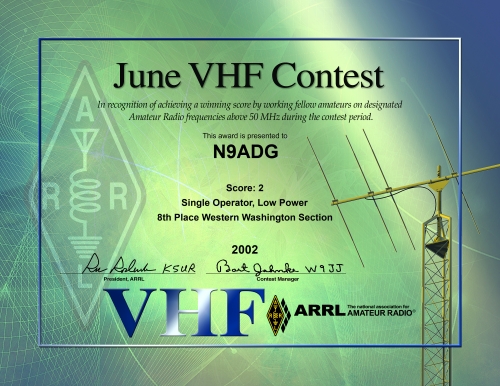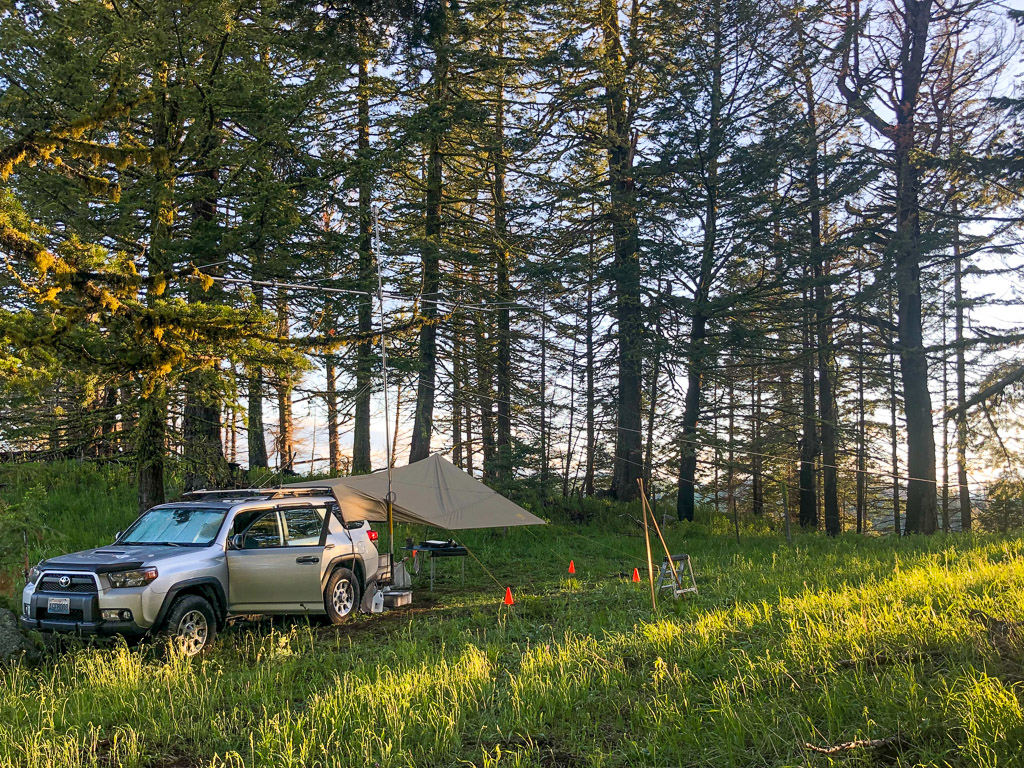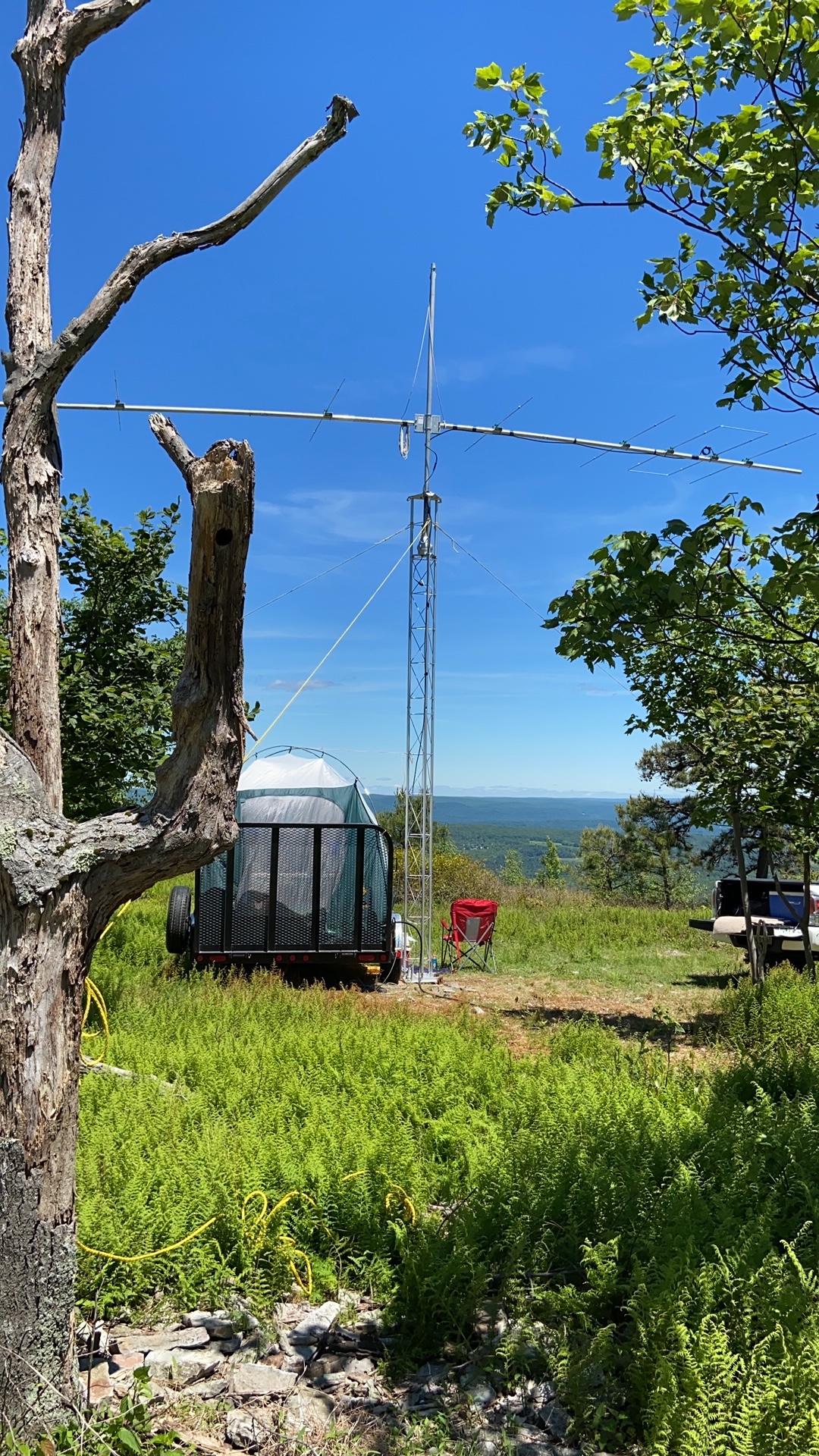 June 24, 2020 Editor: Paul Bourque, N1SFE | ||||
IN THIS ISSUE
ARRL Field Day is this weekend, June 27 and 28. This operating event is not a contest, but it is an opportunity to operate efficiently and of course, have fun. Remember that when providing the exchange, don't add any extra words or phrases, such as "Please copy." PE is a new section for Field Day, so make sure your software has been updated if necessary. Only WSJT-X version 2.2.2 and higher can handle the PE section, so you might need to upgrade if you're using that software for Field Day. July 1 is Canada Day, and the RAC Canada Day Contest is from 0000 to 2359 UTC. CW and SSB are the modes for this contest, and don't forget that the contest starts on Tuesday evening in North America. Look for the special RAC stations for extra points. They are enumerated in the RAC rules, but all of them have call signs with "RAC" as the suffix. They can be worked once on each band and on each mode. Complete information for all contests follows the Conversation section 25 Jun - 8 Jul 2020 June 25 June 26 June 27
June 29 June 30 July 1 July 2 July 3 July 4
July 6 July 7 July 8 The YOTA In The Americas Youth on the Air Summer Program, like most gatherings everywhere, has gone virtual. The original YOTA Campers will be attending a Virtual YOTA Day on June 24, 2020 via Zoom; everyone will be able to watch via YouTube. Look for the W8Y special event station on the bands through June 26, operated remotely by YOTA Campers. W8Y will also be on the air for ARRL Field Day. On June 25, YOTA in IARU Region 1 is having a second "YOTA Online" session at 1800 UTC. Watch the website or follow @hamyota on Twitter to get the details. Rick, WW1ME, writes in regard to the conventional setup of a CW paddle: "The right-hand lever is the 'dah' if you are right-handed. For lefties, it's just the opposite. Most keyers/radios will let you change the keyer 'sense' for RH or LH. I recall back in the day, too, that all MFJ keyers were wired for the wrong sense, so when you plugged in your paddle, it was set for a lefty. If you used that paddle with other devices, that could be a real issue. Otherwise, you'd have to swap the wires." Another temporary means of sending with a paddle that's opposite of what you're used to is to turn it around, and reach over the paddle for the levers. Awkward, but the technique works for a limited amount of sending.
The ARRL Contest Portal has taken a major leap forward in functionality. It's now a "is now a one-stop shop for all ARRL-sponsored contests." The portal's main page shows the status of ARRL Contests over the last year, and navigation bars are provided to particular functions or contests. One of the most-tweeted features is the "Certificates" function - by typing in your call, you can download certificates for ARRL Contests for which you've submitted logs. Joe, OZ0J, and Bob, N6TV, are at it again - they're gathering a list of Headquarter Multiplier stations for the upcoming IARU HF Championship contest in July, and formatting the list into call history formats used by various logging programs. When used with contest loggers that support a call history file, it could save typing. Joe is accepting changes and corrections to 2019's IARU list at contest@oz0j.dk. Bob will be "reformatting and distributing this data as HQ station pre-fill files in multiple formats compatible with N1MM Logger+, Writelog, Win-Test, DXLog.net, TR4W, Skookum Logger and UcxLog. Download itu.zip from https://bit.ly/itudtb, which will be updated frequently. Installation instructions and test procedures are documented in the Readme.txt file inside the Zip." According to VE2FK, N1MM Logger+ users will be able to use the auto-download feature of that program to download it as IARU_2020.txt from the N1MM Logger+ website. Remember - it is not good practice to use a call history file to guess at call signs that you are unsure you've copied correctly. The RAC Canada Day Contest is July 1 from 0000 to 2359 UTC. The participation in this year's mid-week event could be larger than normal as a consequence of widespread shutdowns still in place. Recent Windows updates may have jumbled sound and com port driver orders, depending on your configuration. If your computer was updated recently, now might be a good time to check that all of your sound devices are what you think they are, and that COM ports work as intended with your installed software, versus in the hours just before a contest that requires those ports. Summer is an excellent time to do outdoor equipment and antenna maintenance, but every region has the potential for insect encounters. Watch out for ticks, and recognize the signs of tick bites; be careful opening enclosures that wasps or poisonous spiders might be using as homes. ARRL VHF/UHF contest rules allow self-spotting and coordination of contacts ("skeds") via online and other means. For the recent ARRL VHF Contest, Dave, KG5CCI, sent an email to the VHF Contesting email reflector listing all of the venues for coordinating a contact with his team: "We will be on the air for the duration of the contest looking for contacts. We have full SSB, FM, CW, and digital capabilities on all bands. Listen for us on all the standard digital and voice frequencies. We'll be monitoring all the normal places for sked requests -- but here's a list of every place I think we should be hanging out: Twitter: Dave @KG5CCI, Wyatt @wyattAC0RA, Matt @matt_nj4y, Slack: VHF-chat.slack.com Channel #contest, Email: dave@druidnetworks.com, Pingjockey, NOUK-EME Chat, HB9Q EME Chat, ON4KST Chat." That's a lot to manage during a contest. Ray, G4FON, has written a program entitled CW Contest Trainer and has made it available on his website. His program supports a number of contests, including CQ WPX, CQ WW, IOTA, ARRL Field Day, ARRL Sweepstakes, CW Ops CWT, NAQCC, and SKCC. The free version on his website is limited in operation, but can be upgraded for a fee. DRO As it pertains to Low Noise Blocks (LNBs), typically found at the feed point of microwave frequency dish antennas, DRO means "Dielectric Resonator Oscillator" and involve using some physical properties of a device to generate frequencies. Since materials change in dimension with varying frequency, DROs are affected by the temperature. Phase Locked Loop (PLL) LNBs use a temperature-stable frequency source to generate their frequencies, and are more stable.
Jim, K5ND, was a rover for the June ARRL VHF Contest: "Here's a 3-minute video that I pulled together showing my rover setup prior to the contest along with a quick overview of the 10 grid stops during the contest. It might help shed some light on the life of a VHF rover...lots of room for improvisation among rovers. It was a good contest with fantastic 6-meter opening from EM14 late on Sunday." At the other end of the spectrum, Steve, VE6WZ, has made a YouTube video of how he tunes a reflector for a two-element vertical parasitic array, specifically for his 160-meter parasitic array that uses his shunt-fed tower as a driver. Steve's video shows the theory behind his method using a two-element Yagi to demonstrate mutual coupling between a driven element and a parasitic element using a NanoVNA. He goes on to model the relationship between feed point real resistance (not reactance) and gain characteristics using 4NEC2. He then applies this to describe how he tunes 40-, 80-, and 160-meter antennas. The video's YouTube page also has links to papers on the design aspects of his two-element Yagis and verticals.
Alan, W2AEW, just published a 6-minute video on how to use a NanoVNA for various antenna-oriented tasks. Sure, you could figure this out from the manual(s), however it's easier to watch someone do it. The Boring ARC, sponsor of the Stew Perry Topband Distance Challenge, is working on a new award for the top-scoring single-operator entrant that operates in all four of the Stew Perry events - Sprint, Summer, Fall, and Winter. The first "Master of the Four Seasons Award" competition would start with the December 2020 Winter event, and be awarded after September's Fall event. Determination of the winner is not a simple addition of the scores; see the website for the details on how the scores will weighted towards encouraging competition in the March, June, and October events. A "Test Run Score" will be calculated for the December 2019 through September 2020 interval. After A Contest, Send In the Log Immediately As soon as you can after the contest, send in your log to the contest sponsors. Your log is what you copied during the contest; no changes are necessary. With the contest over, the log should be ready to send. Generate the Cabrillo file, and submit it via email or the contest sponsor's website. With most major contests moving to shortened submission periods, it's all too easy to forget about it and miss the log submission deadline. N1MM Logger+ version 1.0.8481 added a new field, "FocusEntry," to the Radio Info UDP Packet to allow external programs to better control the operation of the logging program. An example might be to have an external program send message keys to an entry window to initiate a CQ. In response to a query about where to purchase quality fasteners for antenna work, Mike, K6MKF, responded to the Elecraft Reflector with this advice: "Keep in mind that there are different classes of stainless steel fasteners with different properties and ratings. A good start for this info: https://www.fastenermart.com/understanding-fastener-grades-and-classes.html. I was advised to use Class 6 fasteners for my tower and antenna projects." Node Red has been mentioned in the Contest Update in the past as a potential way to control equipment or automate tasks. Here's an overview article from Elektor on how it can be set up and used with some very basic Raspberry Pi hardware, along with example usage scenarios. Germany's DARC is the sponsor of the Software Defined Radio Academy, normally held in person, in conjunction with the HAMRADIO conference in Friedrichshafen, Germany. This year, the expanded 2-day program will be entirely online streaming via YouTube on June 27 and 28. One session that may be of particular interest to the Contest Update readership is entitled "Operational SDR Benefits in Contesting" by DL2SAX, at 1800-1830 (GMT+2) on June 28 (This would be 9 AM on Sunday morning in Seattle). An excerpt from the abstract: "The SDR radio should not just be reduced on the doubtlessly useful waterfall diagram: The systematic use of an SDR changes the overall station concept and the mode of operating. This talk is on how to use an SDR transceiver as the centerpoint of a modern contest station with the operating goal 'SO2R mode' (i.e. single operator, two radios), however only using a single SDR transceiver." (via QRZnow.com) Zoom and Contester Technology Adoption Most of us have been compelled to experience new ways of doing things online in the past few months, and "Zoom" has nearly attained verb status as a means of communicating. Why did Zoom seemingly break away from the pack and gain such widespread usage for video conferencing over the other choices that people have? I would argue that Zoom made a choice to emphasize and prioritize ease of use and quick signup over any other "feature" when everyone needed to switch from in-person to remote over a very short period. Their service "just worked" with fewer decisions on the part of someone signing up, and fewer steps to be able to communicate in one-to-one or one-to-many scenarios. They had the ability to enhance their security and usability features after they'd multiplied their customer base, after they'd been able to also benefit from the network effect of their software being installed. The art and science of increasing adoption of a product, service, or behavior is part of something called a conversion in the online world. It turns out that every time someone has to make any type of decision, such as to supply an email address, choose a plan, click a link in an email, choose a nickname, there's an opportunity for that person to not progress to the next step. Each of those steps represents friction, a narrowing of the funnel of potential customers, and impediment to adoption. How this relates to radio contesting is that adoption of new techniques/technology occurs when:
Cutting-edge contesters are always looking for opportunities to increase their scores. They will try and discard many techniques before finding something that will repeatedly yield increases. Their competition will likely notice the increase in score and try to follow the leader. The main group of contesters will use something if they perceive that it's not too difficult to set up, and that it will increase their scores. If they perceive the effort to set it up will not be rewarded with better scores or more fun, they won't do it. Let's take an example technology that should be appealing for a contester -- online scoreboards. The big multi-multi stations have generally been aware of their competitors score during contests because it's just part of the job - with or without online scoreboards. Reasons why a mainstream contester might be interested in participating in an online scoreboard include:
Today, there are still some roadblocks to get started, including:
Looking at just two logging programs and how they integrate with online scoreboards, let's start with N1MM Logger+. It has an overwhelmingly dominant "market share" as the contest logger for most contests and is maximally configurable to be able to work with any of the online scoreboard systems. The downside of flexibility is that scoreboard configuration is made more complicated by this, and many mainstream contesters just won't complete it. N3FJP (he has different programs for different contests) thinks the sweet spot for contest scoreboards is to foster intra-club competition, and so over the past few years, N3FJP's software has focused on making it as easy as possible for a club to publish scores on their own servers, with minimal configuration required by individual club members. A club member who just wants to report their score using N3FJP's software just needs to enter three pieces of information into the logging program - no interaction necessary with a third-party website, no additional email address confirmations. They can view their scores versus their peers on a club website. It just works. Only one reasonably computer-savvy club member is required to set up the server. No logger I'm aware of (yet) displays information gathered from an online scoreboard in any of the logging windows. A contester today uses an additional web browser window to display competing scores. No display will yet provide encouraging or insightful messages during a contest such as "you've just moved up a spot to #4!" or "if you work another multiplier right now you can move up a position!" Now that we're all more familiar with remote meetings, single-click software upgrades, and minimal initial configuration as a consequence of being more online during social distancing, I hope we all can better appreciate the value of user-friendly configuration, and that our contesting software continues to incorporate thoughtful ways to get more people using new capabilities without requiring extensive configuration. And once we have access to more tools and information, think of the new skills and higher scores that can be built on top of those! That's all for this time. Remember to send contesting related stories, book reviews, tips, techniques, press releases, errata, schematics, club information, pictures, stories, blog links, and predictions to contest-update@arrl.org. 73, Brian N9ADG An expanded, downloadable version of QST's Contest Corral is available as a PDF. Check the sponsors' website for information on operating time restrictions and other instructions. HF CONTESTS QRP Fox Hunt, Jun 25, 0100z to Jun 25, 0230z; CW; Bands: 20m Only; RST + (state/province/country) + name + power output; Logs due: June 26. VHF+ CONTESTS VHF-UHF FT8 Activity Contest, Jul 1, 1700z to Jul 1, 2000z; FT8; Bands: See Rules; 4-character grid square; Logs due: July 6.
25 Jun - 8 Jul 2020 June 25, 2020 June 26, 2020 June 27, 2020 June 28, 2020 June 29, 2020 June 30, 2020 July 1, 2020
July 2, 2020 July 4, 2020 July 6, 2020 July 7, 2020 ARRL Information Click here to advertise in this newsletter, space subject to availability. Your One-Stop Resource for Amateur Radio News and Information ARRL membership includes a choice of one print magazine: QST, the monthly membership journal, or On the Air, ARRL's new bimonthly publication for beginner and intermediate hams. All ARRL members can access all four ARRL magazines -- QST, On the Air, NCJ, and QEX - digitally. Subscribe to NCJ - the National Contest Journal. Published bimonthly, features articles by top contesters, letters, hints, statistics, scores, NA Sprint and QSO Parties. Subscribe to QEX - A Forum for Communications Experimenters. Published bimonthly, features technical articles, construction projects, columns and other items of interest to radio amateurs and communications professionals. Free of charge to ARRL members: Subscribe to The ARRL Letter (weekly digest of news and information), the ARES E-Letter (monthly public service and emergency communications news), Division and Section news -- and much more! ARRL offers a wide array of products to enhance your enjoyment of Amateur Radio. Visit the site often for new publications, specials and sales. Donate to the fund of your choice -- support programs not funded by member dues! Reprint permission can be obtained by sending email to permission@arrl.org with a description of the material and the reprint publication. ACKNOWLEDGMENTS ARRL Contest Update wishes to acknowledge information from WA7BNM's Contest Calendar and SM3CER's Contest Calendar. | ||||









